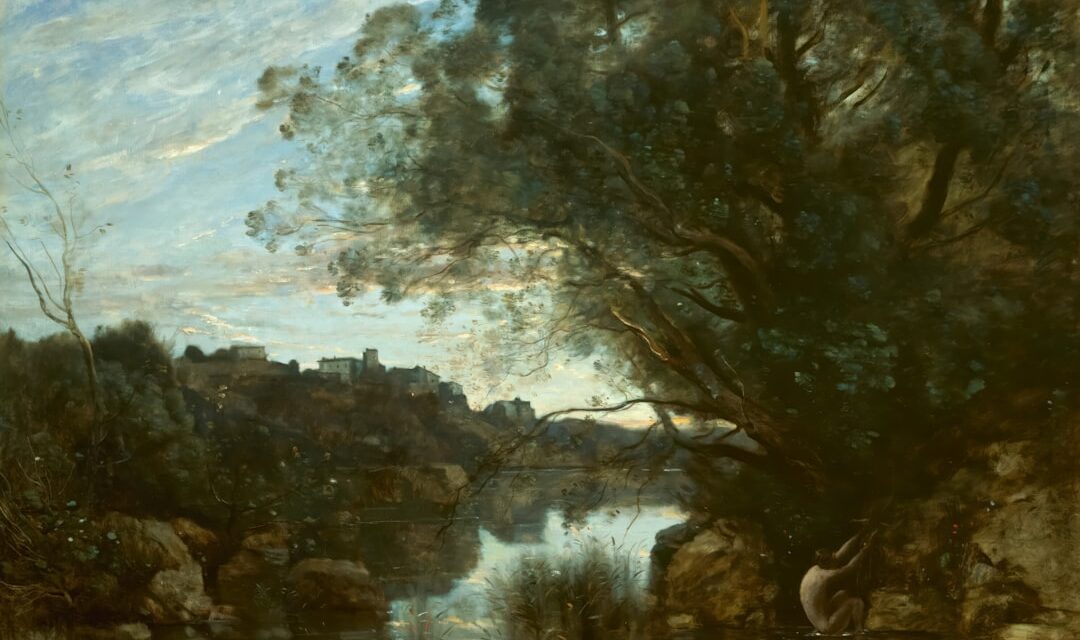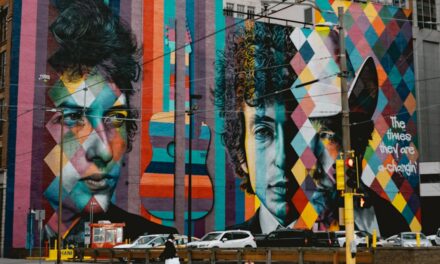Aerial perspective, also known as atmospheric perspective, is a technique employed in visual art to create the illusion of depth and distance within a two-dimensional space. This method relies on the subtle changes in colour, clarity, and detail that occur as objects recede into the background. As an observer gazes into the distance, the atmosphere between the viewer and distant objects scatters light, resulting in a gradual fading of colour saturation and a softening of edges.
Consequently, objects that are further away appear lighter, bluer, and less distinct than those in the foreground. This phenomenon is not merely a stylistic choice; it is rooted in the physics of light and perception, making it a powerful tool for artists seeking to convey realism and spatial relationships. The concept of aerial perspective extends beyond mere colour manipulation; it encompasses the overall composition and emotional resonance of a piece.
By employing this technique, artists can guide the viewer’s eye through the artwork, creating a sense of journey and exploration. The interplay of foreground, middle ground, and background can evoke feelings of vastness or intimacy, depending on how effectively aerial perspective is utilised. In essence, aerial perspective serves as a bridge between the viewer and the depicted scene, enhancing the narrative quality of the artwork while simultaneously grounding it in a believable spatial context.
Summary
- Aerial perspective is the technique of creating the illusion of depth and distance in a painting by using colour and value to mimic the effect of atmosphere on objects.
- Aerial perspective has been used in art since the Renaissance, with artists like Leonardo da Vinci and Claude Lorrain pioneering its use.
- Techniques for creating aerial perspective include using cooler and lighter colours for distant objects, softening edges, and adjusting contrast and detail.
- Aerial perspective is important in art as it adds realism and depth to a painting, creating a sense of atmosphere and distance.
- Famous artworks that showcase aerial perspective include “Mona Lisa” by Leonardo da Vinci and “The Hay Wain” by John Constable.
The History of Aerial Perspective in Art
The origins of aerial perspective can be traced back to ancient civilisations, where early artists began to experiment with ways to depict depth in their works. However, it was during the Renaissance that this technique was fully realised and systematically applied by artists such as Leonardo da Vinci and Albrecht Dürer. Da Vinci, in particular, was instrumental in articulating the principles of aerial perspective in his writings, emphasising how atmospheric conditions affect the appearance of distant objects.
His meticulous studies of light and shadow laid the groundwork for future generations of artists to explore this concept further, allowing for a more nuanced understanding of how to represent three-dimensional space on a flat surface. As art evolved through the Baroque and Romantic periods, aerial perspective continued to play a significant role in shaping artistic expression. Artists like Claude Lorrain and J.M.W.
Turner embraced this technique to evoke emotional responses from their audiences. Lorrain’s landscapes often featured hazy horizons that suggested an ethereal quality, while Turner’s dramatic use of light and colour created a sense of movement and atmosphere that captivated viewers. The evolution of aerial perspective reflects broader shifts in artistic philosophy, moving from strict realism to more expressive interpretations of nature and emotion.
This historical trajectory highlights not only the technical advancements in art but also the changing perceptions of reality and representation throughout different eras.
Techniques and Tools for Creating Aerial Perspective

Creating effective aerial perspective involves a combination of techniques that artists can employ to manipulate colour, tone, and detail. One fundamental approach is to gradually lighten colours as they recede into the background. This can be achieved by mixing colours with white or using lighter hues that mimic the effects of atmospheric scattering.
Additionally, artists often employ a technique known as “glazing,” where thin layers of transparent paint are applied over dried layers to create depth and luminosity. This method allows for subtle transitions between colours, enhancing the illusion of distance without sacrificing vibrancy in the foreground. In terms of tools, artists have a variety of options at their disposal to achieve aerial perspective effectively.
Traditional mediums such as oil paints and watercolours lend themselves well to this technique due to their blending capabilities. Oil paints allow for smooth transitions between colours, while watercolours can create soft washes that mimic atmospheric effects. Digital artists also have access to an array of software tools that enable them to manipulate layers and colours with precision.
Brushes with varying opacities can simulate the softening effect seen in traditional media, while gradient tools can help create seamless transitions between foreground and background elements. Regardless of the medium chosen, mastering these techniques requires practice and an understanding of how light interacts with objects at different distances.
The Importance of Aerial Perspective in Art
Aerial perspective holds significant importance in art as it enhances the viewer’s experience by providing a sense of realism and spatial awareness. By accurately depicting how objects appear at varying distances, artists can create immersive environments that draw viewers into their work. This technique not only adds depth but also contributes to the overall narrative by establishing relationships between different elements within the composition.
For instance, a well-executed aerial perspective can suggest a journey through a landscape or highlight the significance of certain objects by placing them prominently in the foreground while allowing others to fade into the background. Moreover, aerial perspective serves as a means of emotional expression within art. The way an artist chooses to manipulate depth can evoke feelings ranging from tranquillity to tension.
For example, a serene landscape with soft blues and greens receding into the distance may instil a sense of calmness, while a dramatic sunset with vibrant colours transitioning into muted tones can convey urgency or nostalgia. By understanding and utilising aerial perspective effectively, artists can not only depict physical spaces but also communicate complex emotional narratives that resonate with viewers on multiple levels.
Examples of Aerial Perspective in Famous Artworks
Throughout art history, numerous masterpieces exemplify the effective use of aerial perspective to create depth and atmosphere. One notable example is Leonardo da Vinci’s “Mona Lisa,” where the background landscape fades into soft blues and greys, enhancing the enigmatic quality of the subject’s expression. The gradual transition from detailed foreground elements to hazy background vistas exemplifies da Vinci’s mastery of this technique, drawing viewers’ attention to the figure while simultaneously grounding her within a believable environment.
Another iconic work that showcases aerial perspective is J.M.W. Turner’s “The Fighting Temeraire.” In this painting, Turner employs soft hues and atmospheric effects to depict a ship being towed towards its final berth. The use of light and colour creates a sense of nostalgia and melancholy, as the ship appears almost ghostly against the vibrant sunset.
The fading details in the background serve to heighten the emotional impact of the scene, illustrating how aerial perspective can be used not only for spatial representation but also for conveying deeper themes within an artwork.
Tips for Using Aerial Perspective in Your Own Art

Observing Real-Life Landscapes
When incorporating aerial perspective into your own artwork, it is essential to start by observing real-life landscapes or scenes. Take note of how colours change as they recede into the distance; often, distant mountains or trees will appear lighter and less saturated than those nearby. Practising plein air painting can be particularly beneficial as it allows you to capture these nuances directly from nature.
Using Reference Materials and Techniques
Additionally, consider using reference photographs that highlight atmospheric effects; studying these images can provide valuable insights into how light interacts with various elements in a scene. Another crucial tip is to experiment with layering techniques when applying paint or digital media. Begin with your foreground elements, ensuring they are rich in detail and colour saturation.
Creating Depth and Contrast
Gradually build up your background using lighter tones and softer edges to create depth. Remember that contrast plays a vital role; strong contrasts in the foreground will enhance the illusion of distance when paired with softer transitions in the background.
Evaluating Your Work
Finally, don’t hesitate to step back from your work periodically; this will help you assess whether your use of aerial perspective effectively conveys depth and atmosphere.
Common Mistakes to Avoid when Using Aerial Perspective
One common mistake artists make when attempting to utilise aerial perspective is neglecting colour harmony throughout their composition. While it is essential to lighten colours as they recede into the background, it is equally important to maintain a cohesive colour palette that ties all elements together. Overly contrasting colours can disrupt the illusion of depth and make distant objects appear jarring rather than harmonious with their surroundings.
To avoid this pitfall, consider using analogous colours or complementary shades that work well together while still allowing for variation in saturation and brightness. Another frequent error is failing to soften edges appropriately as objects move into the background. Sharp lines can create an unrealistic sense of proximity for distant elements, undermining the intended effect of depth.
Instead, practice blurring or softening edges gradually as you move away from the foreground; this will enhance the atmospheric quality of your work. Additionally, be mindful of scale; distant objects should appear smaller than those in the foreground to reinforce spatial relationships effectively.
Experimenting with Aerial Perspective in Different Art Styles
Aerial perspective is not confined to traditional landscape painting; it can be adapted across various art styles and movements. For instance, in abstract art, artists may choose to employ aerial perspective through colour gradients and layering techniques that suggest depth without relying on realistic forms. By manipulating hues and shapes, abstract artists can evoke feelings associated with distance while maintaining their unique stylistic expressions.
In contemporary digital art, aerial perspective can be explored through innovative techniques such as 3D modelling or virtual reality environments. Artists can create immersive experiences that allow viewers to navigate through space while experiencing changes in colour and detail dynamically. This modern interpretation expands upon traditional methods by incorporating technology into artistic practice, offering new avenues for experimentation with aerial perspective across diverse styles and mediums.
In conclusion, aerial perspective remains an invaluable technique within the realm of visual art, offering artists a means to convey depth, emotion, and narrative effectively. By understanding its historical context, mastering various techniques, and avoiding common pitfalls, artists can harness this powerful tool to enhance their work across different styles and mediums. Whether through traditional painting or contemporary digital practices, experimenting with aerial perspective opens up exciting possibilities for creative expression and engagement with viewers.
For those intrigued by the nuances of artistic techniques such as aerial perspective, exploring different art movements can provide further insight into the evolution of visual representation. A particularly relevant article that complements an understanding of aerial perspective is An Introduction to Expressionism. This article delves into the Expressionist movement, which emphasises the expression of emotional experience rather than physical reality, often employing bold colours and exaggerated forms that can be seen as a conceptual counterpart to the technical methods seen in aerial perspective.




